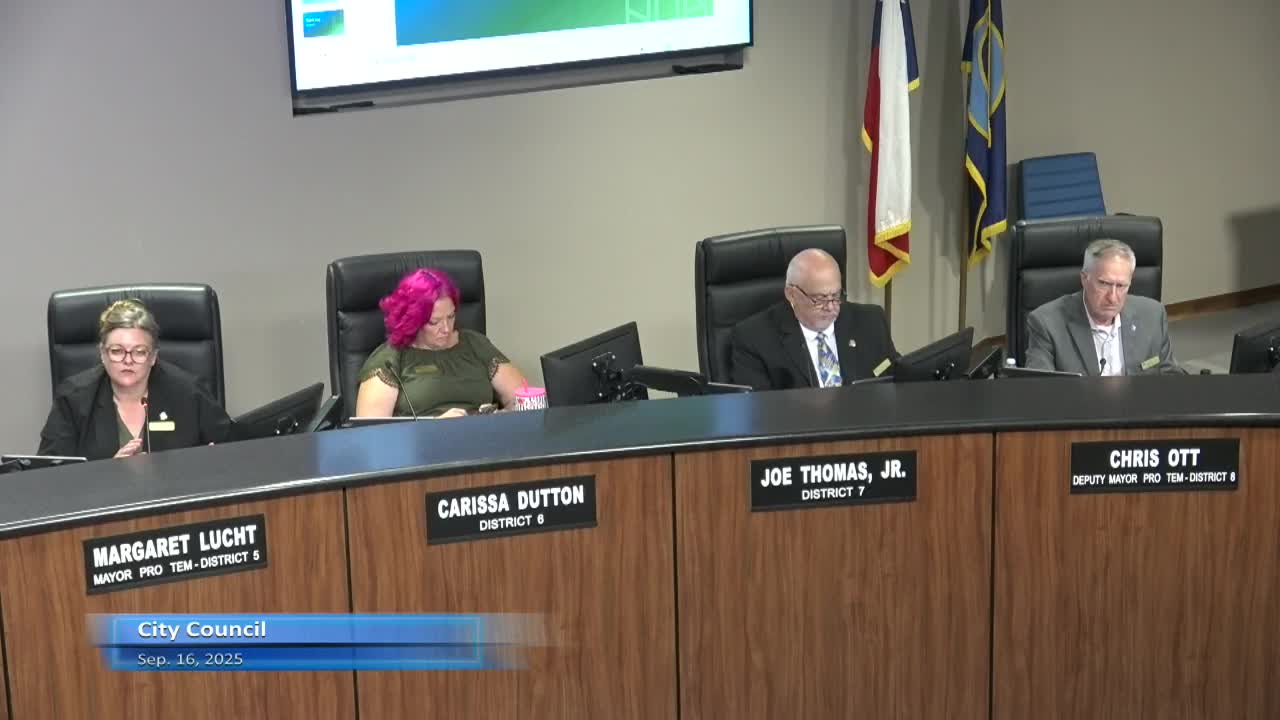Murphy USA proposes new gas station in Laredo amid community concerns on development
September 16, 2025 | Garland, Dallas County, Texas
This article was created by AI summarizing key points discussed. AI makes mistakes, so for full details and context, please refer to the video of the full meeting. Please report any errors so we can fix them. Report an error »

In the heart of Garland, Texas, city council members gathered on September 16, 2025, to discuss a pivotal development proposal that could reshape a neighborhood's landscape. The meeting buzzed with anticipation as officials weighed the potential for a new commercial site, which could serve as a community gathering space, against the backdrop of existing local businesses.
The discussion centered around a proposed site that, according to city staff, holds the promise of becoming a well-planned neighborhood center. Council members were particularly interested in what types of establishments could fulfill this vision. Suggestions included sit-down restaurants, which foster community interaction, as opposed to transient businesses like gas stations that offer little more than a quick stop. The conversation highlighted the community's desire for more dining options, with residents expressing a preference for sit-down restaurants over additional gas stations.
As the dialogue unfolded, it became clear that the area already boasts a healthy mix of dining establishments, with approximately a dozen restaurants within a half-mile radius. This raised questions about the necessity of adding more gas stations, of which there are already six in the vicinity. The council's inquiry into the balance of commercial offerings underscored a broader goal: to enhance the community's social fabric through thoughtful development.
Jeff Tucker, a representative from Murphy USA, took the floor to present his company's vision for the site. With a commitment to quality and community engagement, Tucker emphasized Murphy USA's focus on being a value-oriented retailer. He outlined the company's stringent operational standards and its proactive approach to public safety, including a partnership with local law enforcement to ensure a secure environment.
The council's deliberations reflected a careful consideration of the community's needs and aspirations. As they weighed the potential benefits of the proposed development against the existing commercial landscape, it became evident that the future of this neighborhood hinges on a delicate balance between growth and community identity. The outcome of this meeting could set the stage for a new chapter in Garland's ongoing evolution, one that prioritizes both economic vitality and the well-being of its residents.
The discussion centered around a proposed site that, according to city staff, holds the promise of becoming a well-planned neighborhood center. Council members were particularly interested in what types of establishments could fulfill this vision. Suggestions included sit-down restaurants, which foster community interaction, as opposed to transient businesses like gas stations that offer little more than a quick stop. The conversation highlighted the community's desire for more dining options, with residents expressing a preference for sit-down restaurants over additional gas stations.
As the dialogue unfolded, it became clear that the area already boasts a healthy mix of dining establishments, with approximately a dozen restaurants within a half-mile radius. This raised questions about the necessity of adding more gas stations, of which there are already six in the vicinity. The council's inquiry into the balance of commercial offerings underscored a broader goal: to enhance the community's social fabric through thoughtful development.
Jeff Tucker, a representative from Murphy USA, took the floor to present his company's vision for the site. With a commitment to quality and community engagement, Tucker emphasized Murphy USA's focus on being a value-oriented retailer. He outlined the company's stringent operational standards and its proactive approach to public safety, including a partnership with local law enforcement to ensure a secure environment.
The council's deliberations reflected a careful consideration of the community's needs and aspirations. As they weighed the potential benefits of the proposed development against the existing commercial landscape, it became evident that the future of this neighborhood hinges on a delicate balance between growth and community identity. The outcome of this meeting could set the stage for a new chapter in Garland's ongoing evolution, one that prioritizes both economic vitality and the well-being of its residents.
View full meeting
This article is based on a recent meeting—watch the full video and explore the complete transcript for deeper insights into the discussion.
View full meeting
